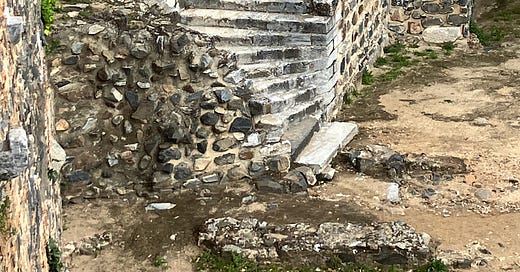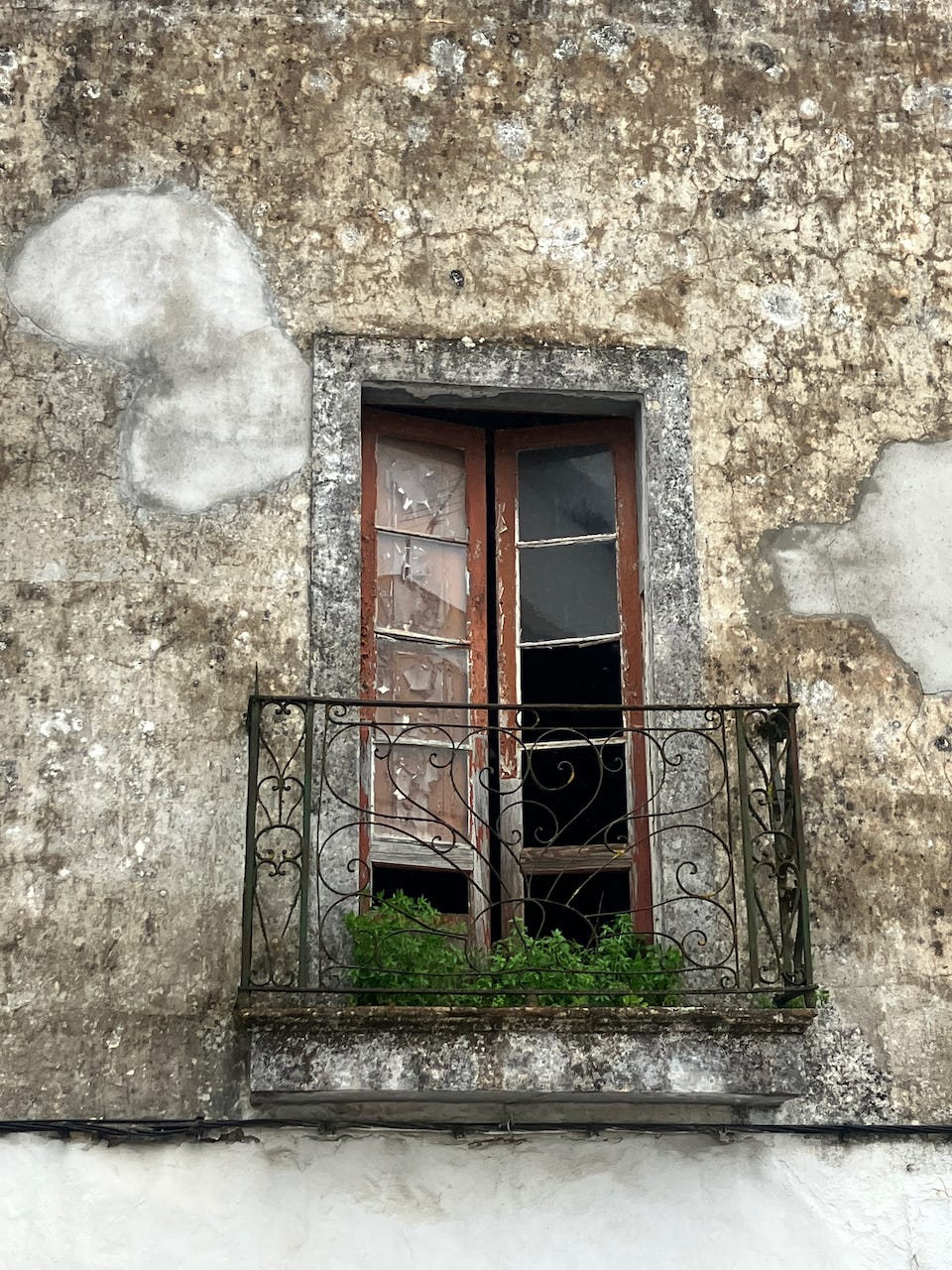What Would Obama Have Done?
My general rule for visiting anywhere is to always spend at least two nights. One night means you’ll spend most of your time unpacking and packing. Two nights at least gives you a full day to take in where you are, in a relaxed fashion.
I violated my own rule recently when visiting Beja, a sizable city in the interior of Portugal and the capital of the province we live in. It’s a mere 90-minute drive from us, but it feels much farther because it lies deep, deep in Portugal’s interior, where we hip coastal residents often don’t deign to venture.
In deciding how long to stay, I made what I call an “Obama error”—meaning I bargained with myself before bargaining with K. I anticipated, perhaps wrongly, that she wouldn’t want to visit Beja. So I preemptively proposed just one night. What I should have done was propose three nights and let her work me down to two.
Even with just one night, I enjoyed Beja—though I wish it had been more.
As in the United States, coastal areas (which in America include the Great Lakes) are more popular than the interior, which some have bitingly called “flyover country.” The Trump revolution was a revenge of flyover country since a majority of those areas voted for him, and most coastal areas did not.
Arriving in Beja, the inhabitants of this city of about 35,000 seemed unaware of any lesser status. There were shops, restaurants, and plenty of history. The Romans had been there. So had the Moors. And, of course, the Christians. All of this reinforces my belief that in most parts of Europe, you can stab a finger almost anywhere on the map and find amazing things to see. It’s fine to avoid the most touristy places. You can find something just as good a few miles away.
In the center of Beja stands a great castle, which a sign said was the tallest tower—or “keep”—in the Iberian Peninsula. The Christians built it in the 12th century after conquering and expelling the Moors, part of the larger reconquest of what is now Spain and Portugal.
We managed to tour and climb the castle. We didn’t manage to visit the remains of a Roman villa just outside town, which was only discovered in the 1960s by a farmer’s plow. We didn’t have time for much. But we did manage to see, on our way to dinner, a fine square called the Praça da República. It looked like something the Romans could have built, although its signature building with Roman-style columns was built in the early 16th century, when neo-classicism was just coming into vogue.
Next time, I’ll spend at least two nights.
Two Old Richmonders Come Through
One of the best political novels ever written is The Shad Treatment, a fictionalization of Henry Howell’s groundbreaking 1973 campaign for governor of Virginia. It was written by Garrett Epps, a correspondent and founder of the Richmond Mercury, a Rolling Stone–style alternative press newspaper. I’d wager The Shad Treatment was the model for the better-known Primary Colors by Joe Klein, itself a fictionalization of Bill Clinton’s 1992 presidential campaign.
Epps didn’t stay a dirty hippie and lowly reporter. He went to law school and became a respected professor out West and other places, leaving his hometown of Richmond behind. He still writes, though, and serves as legal affairs editor for The Washington Monthly, a magazine where my own name has popped up a few times.
I came across Epps’ essay about the Supreme Court and President Donald Trump while procrastinating the writing of this newsletter. I thought it was some of the best analysis I’ve seen. Before I read it, I had sensed the general drift of what Epps was discussing—this dance the Court is doing with Trump, instead of a clear fight, probably led by Chief Justice Roberts—but I certainly couldn’t have explained it as well or as cleverly as Epps.
Here is a link to his essay, which I encourage readers to enjoy.
In this piece, Epps quotes approvingly from a recent opinion by Judge J. Harvie Wilkinson III—another Richmonder and, like Epps, also a graduate of St. Christopher’s, a prep school I am familiar with in that capital city.
And guess what? Wilkinson is also a journalist-turned-lawyer, or rather, a lawyer turned journalist, and then judge. After law school, he somehow talked himself into the prestigious position of editorial page editor at The Virginian-Pilot, where I once worked as a reporter. My great-grandfather, Albert Grandy, was once publisher of that paper, so another layer of personal connection.
With a name like Judge J. Harvie Wilkinson III, you’d expect him to be more conservative than God, and that had always been what I had heard. But faced with Trump’s actions, Wilkinson joined those standing up directly to the current president. Epps wrote that it practically brought tears to his eyes. I have to say: same here. I encourage you to read both Wilkinson’s opinion and Epps’s essay—the latter is a good place to start.
Tummy Time: A Cleaver Runs Through It
A pig does not consist entirely of pork chops, though that’s pretty much the only cut I was used to buying back in the States. This handy oval of meat with a handle was what I saw in recipes and in the supermarket.
So it was a surprise to discover, when I lived in Prague, that pork chops were just about unavailable in butcher shops, of which there were many, since Czechs (like the Portuguese) still enjoy the services of traditional butchers. Czechs eat more pork than any other meat, but not in the form of pork chops.
The same is true here in Portugal. In my local butcher’s glass cases, you’ll see many cuts of pork, but generally speaking, not chops. (The exception is with the more expensive porco preto, or black pork—free-range hogs that roam beneath cork trees. For some reason, chops are sometimes available with the black pork, but still not common. I have never seen them featured in a restaurant menu.)
What this shows is that there are many ways to slice up a pig, and the one that gives you pork chops is just one of them.
This reminds me of a once-famous book, Zen and the Art of Motorcycle Maintenance. One of the central insights of its author, Robert M. Pirsig, is that we wield an intellectual scalpel. His example was the motorcycle, which he dissects into multiple systems, each different depending on the lens you choose. The same goes for everything else.
A powerful and true thesis.
As with motorcycles, so with the things we eat.
Chickens, it turns out, are not routinely cut the same way here as they are in the States (a style I suspect originally came from the French). In Spain, where I lived long ago, and here in Portugal, butchers will ask if you want a chicken “cut up.” If you say yes, they’ll just whack it into chunks with a cleaver, not into a neat package of leg, thigh, wing, and breast.
Fish aren’t routinely filleted here because the Portuguese aren’t afraid of bones. Also, a skate or ray is sold with the skin on, which explains why a recipe I once used from the States wasn’t working well. There, the skin is usually removed before it even reaches the fish counter.
So it goes.
Then there are lagartinhos, or “little lizards.” That’s the name the Portuguese give one particular cut of meat—used, for some reason, only with black pork. It’s a twisty, fatty strip of meat that tastes marvelous when grilled. I don’t know where it comes from on the hog. I just know it tastes great.
A picture of the raw meat seemed a little too stark. So I leave you with a plate of pork chops that I probably cooked, from 2019. I found it in my foto files. Looks good.






You have much more patience than me, I only staying one night somewhere. I do agree that the most remote places in Europe are frequently the most interesting.